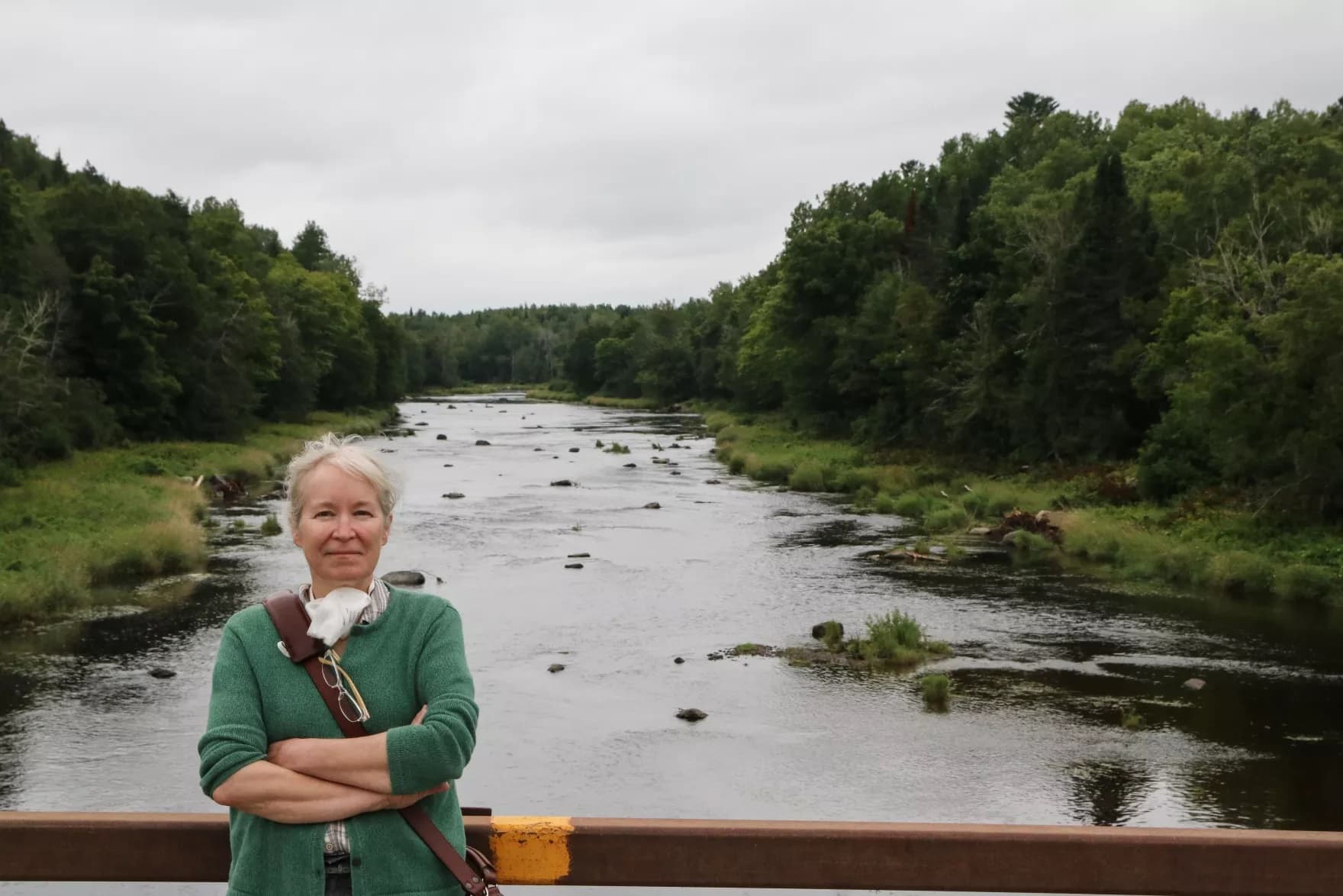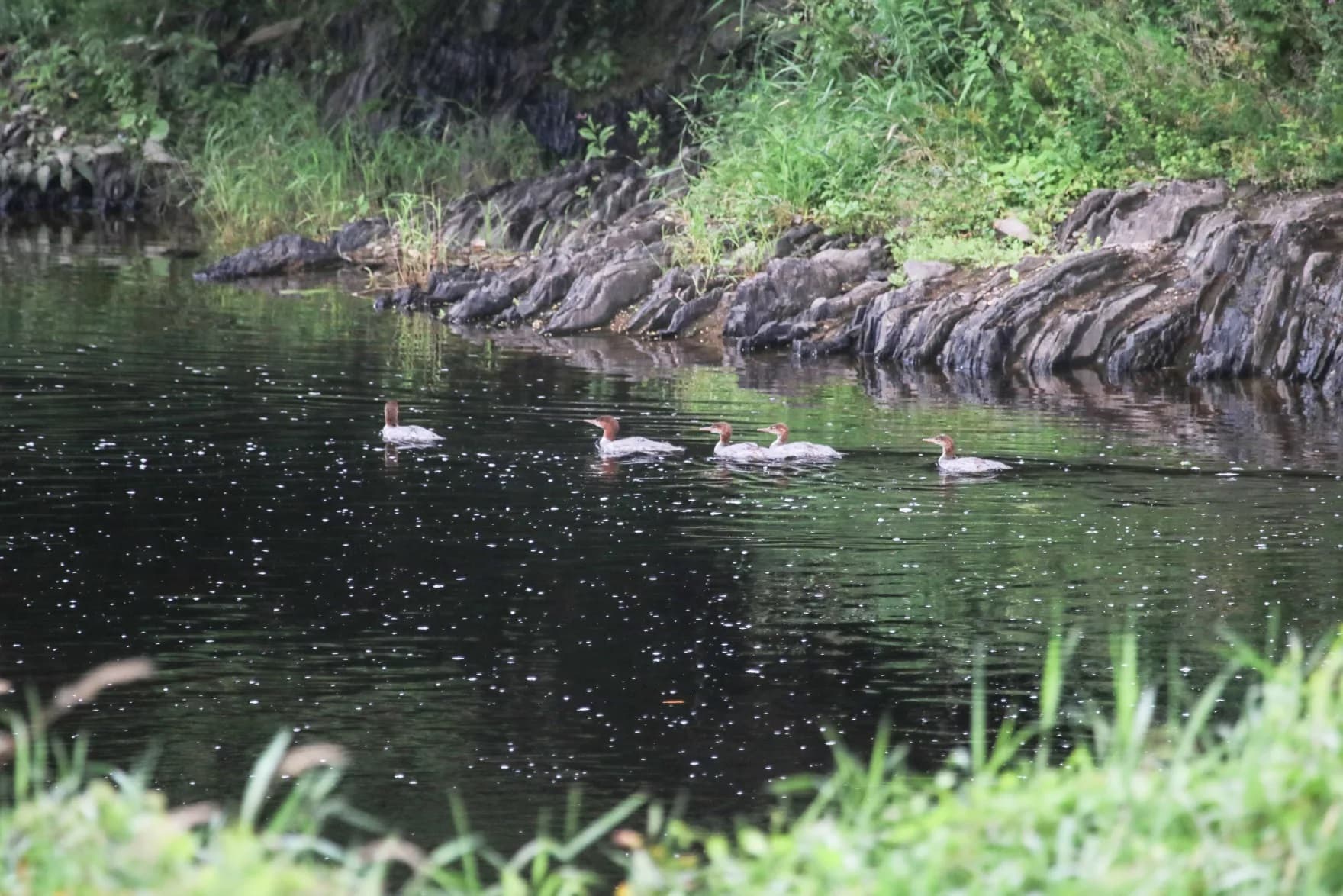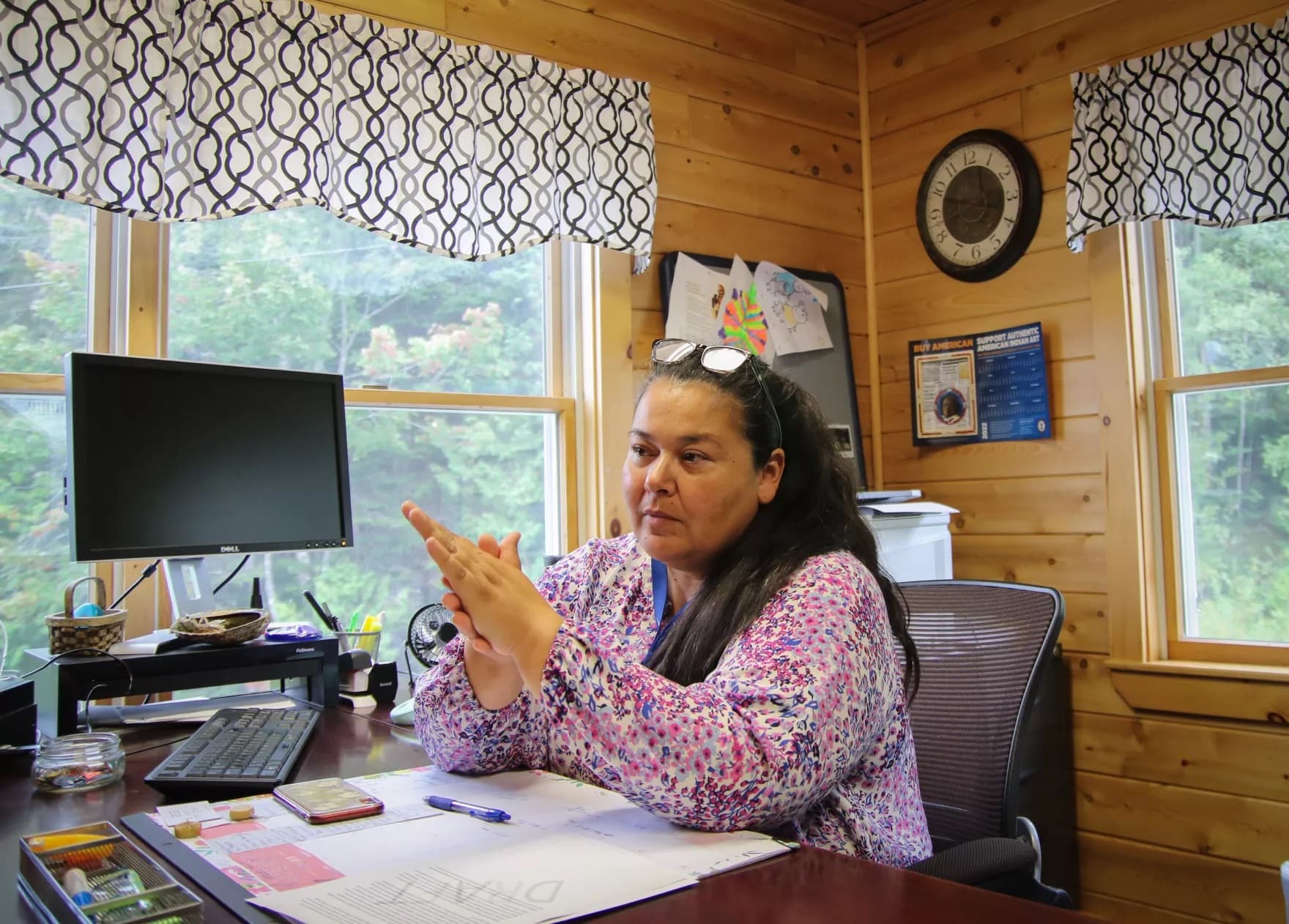Advertisement
To restore the salmon, a Maine tribe will first restore a river

There are eight Maine rivers that are federally recognized as having distinct populations of Atlantic salmon, from the Sheepscot River in the Midcoast, to the Denny's River Down East.
But salmon also once spawned further north, in Aroostook County, and the Houlton Band of Maliseet Indians is trying to bring them back by restoring not just a river, but an entire watershed.
The Meduxnekeag River flows east from its headwaters at a lake in southern Aroostook County, passing through woods and farm fields, and the town of Houlton, then turning northward through the tribal lands of the Houlton Band of Maliseet Indians.
Looking downstream from a bridge that crosses the river just north of tribal lands, Sharri Venno, environmental planner for the tribe, notes that there are no conspicuous boulders or fallen snags, and the channel is wide and shallow. She says it wasn't always like this. The river changed dramatically over the past 150 years, as a result of logging drives.
“They removed a lot of structure, a lot of complexity," Venno says. "So the river really no longer acts as it normally would. It flows a lot faster, it’s a lot shallower, it’s a lot wider than it would otherwise be. If all that structure had remained in place, it would be a different river.”
The loss of structure, says Venno, is one reason the river is no longer optimal salmon habitat. But John Burrows of the Atlantic Salmon Federation says there's an even bigger barrier: a dam built in 1968.
“The Mactaquac Dam, and that’s a huge hydro dam, it’s the first dam on the St. John, just upstream from Fredericton," Burrows says. "And that’s the biggest issue preventing Atlantic salmon recovery, as well as the restoration of a variety of other native fish species in the middle and upper St. John systems.”
Burrows says a trap-and-trucking operation does allow a handful of salmon to pass the dam, and some even successfully spawned recently in a tributary of the Meduxnekeag just across the border, in Canada. But as long as the dam remains, it will be a huge hurdle to salmon restoration in northern Maine
“Historically we would have had tens of thousands of adult salmon coming back to tributaries of the St. John in northern Maine," Burrows says. "At this point in time, we may have a small handful of adults each year going back there. So it’s a fraction of a percent of what we had historically.”

But that has not deterred the Maliseets from restoring the Meduxnekeag to a more natural state that better suits salmon and other native species.
Looking upstream from the bridge, Sharri Venno points to a section that has been painstakingly restored, with help from the U.S. Fish and Wildlife Service, the state of Maine, and other partners. The placement of boulders, she says, has changed the river's flow.
“You’re seeing tens of boulders, strewn around the channel of the river. Creating riffles, recreating pools as the water flows downstream, creating surfaces for insects and amphibians and reptiles and birds," Venno says. "And creating roughness in the channel, which slows down high storm flows."
Venno says this section of river is now better oxygenated and cooler, which is increasingly important as temperatures warm with climate change.
The tribe has also been working with its partners to improve habitat on the river’s tributaries. Recently, they removed a failing culvert on Moose Brook, a key tributary, and replaced it with a bridge, allowing fish to swim freely upstream and down. The cooler waters in tributaries serve as refuges for the river's native brook trout.

In time, the tribe is hoping that all of these efforts will make the habitat suitable for Atlantic salmon. Clarissa Sabattis is the chief of the Houlton Band of Maliseet Indians. She says her people gave the river its name, and uses a Maliseet word to describe their relationship to the river.
“Meduxneke-we-ag," Sabattis says. "That really talks about us, and this location, and that we’re the people of this area."
Chief Sabattis says the salmon, like eagles, are sacred to the tribe.
“Traditionally, salmon ran through this watershed, and this isn’t something we see anymore," Sabattis says. "And it’s really important to us that we restore that natural habitat so that hopefully we can bring them home again.”
Over nearly a decade, the tribe and its partners have restored nearly four miles on the main stem of the river next to tribal lands, and two miles on the river's north branch. But looking out over the river, Venno acknowledges just how much work remains on the river's 426-square-mile watershed in Maine.
“We have to restore the entire watershed to meet the goals we have to restore salmon to our own stretch of reserved trust waters," Venno says. "We need to fix the entire watershed. That’s the only way to do it.”
This story is a production of New England News Collaborative. It was originally published by Maine Public.